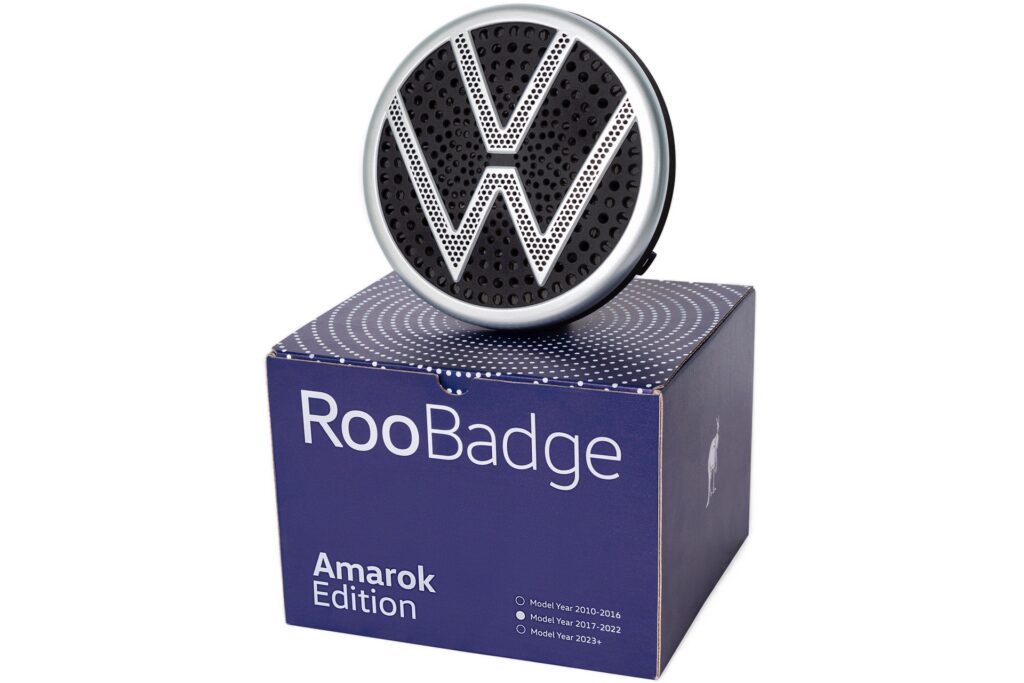Volkswagen says a device emitting a signal warning of a car’s approach could save countless kangaroos and hundreds of thousands of dollars in vehicle damage.
Replacing the usual front Volkswagen badge, the device was developed over three years by Volkswagen Australia and the DDB Group in consultation with the University of Melbourne and wildlife rescue organisation WIRES.
It is hoped that the ‘RooBadge’ will help reduce collisions with kangaroos, which Volkswagen said comprise around 90 per cent of on-road wildlife accidents in Australia.
Connecting to an in-car app, RooBadge calibrates a vehicle’s GPS coordinates with kangaroo distribution data. The device is a circular disc approximately 17 centimetres in diameter that conveys a unique audio deterrent for the kangaroo species that inhabits a vehicle’s particular location. A mixture of natural and artificial sounds is mixed in real time and projected in a high frequency audio signal.
After extensive trials, permission was obtained from the University of Melbourne Office of Research Ethics and Integrity to move into stage four trials involving kangaroos in the wild.
Volkswagen said that while other deterrent devices have existed, none were scientifically developed or proven. “[RooBadge does] something no kangaroo deterrent has been able to do before,” said Graeme Coulson, Associate Professor at Melbourne University. “It’s difficult to produce a single sound that will deter all kangaroos because the species are different to each other. Using advancements in car technology, we can change the sound deterrent by GPS location.
“We have worked on sounds that will be meaningful to eastern grey kangaroos – things like dingo calls, alarm calls made by birds and the alarm thumps that kangaroos make to warn each other. We will then be able to tweak the sound for other species.”
John Grant, a spokesperson at WIRES, said the number of kangaroos increases every year. “WIRES is grateful to automotive companies like Volkswagen for researching and developing solutions to better protect both our kangaroos and motorists,” he added.
According to Ryan Davies, Director of Volkswagen Commercial Vehicles, the company invests time and energy into the project “because we can and it’s the right thing to do.”
“A collision with a ‘roo can be devastating. It is not easily forgotten once seen and certainly not if experienced. Then there’s the possibility of a front-on collision with an approaching vehicle at country road speeds when one driver is trying to avoid striking a kangaroo. These are even more likely to have a fatal human outcome,” he said.
According to Dr Helen Bender of the University of Melbourne, whose research was used extensively in the project, the device could be adapted for different types of animals in other regions.
“Roadkill is a problem all around the world,” she said. “What’s interesting about deer relative to kangaroos is that they’re very similar in body size, head size, and ear size. What we know from science is that the ear shape [and] the head shape tell us that they probably have similar hearing ranges, so whatever we learn has transferability to the deer as well.”

